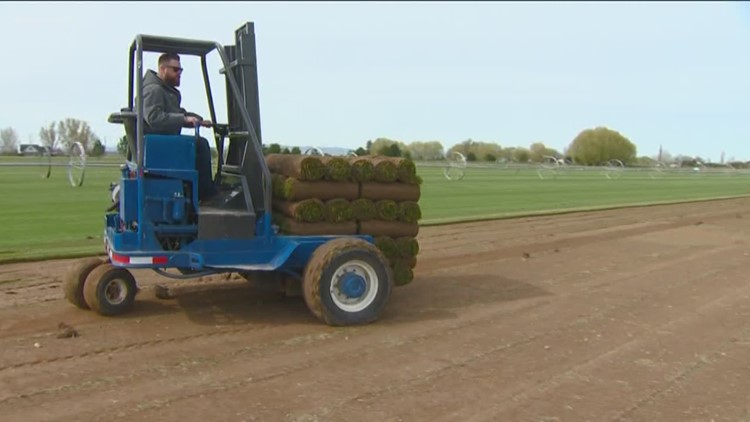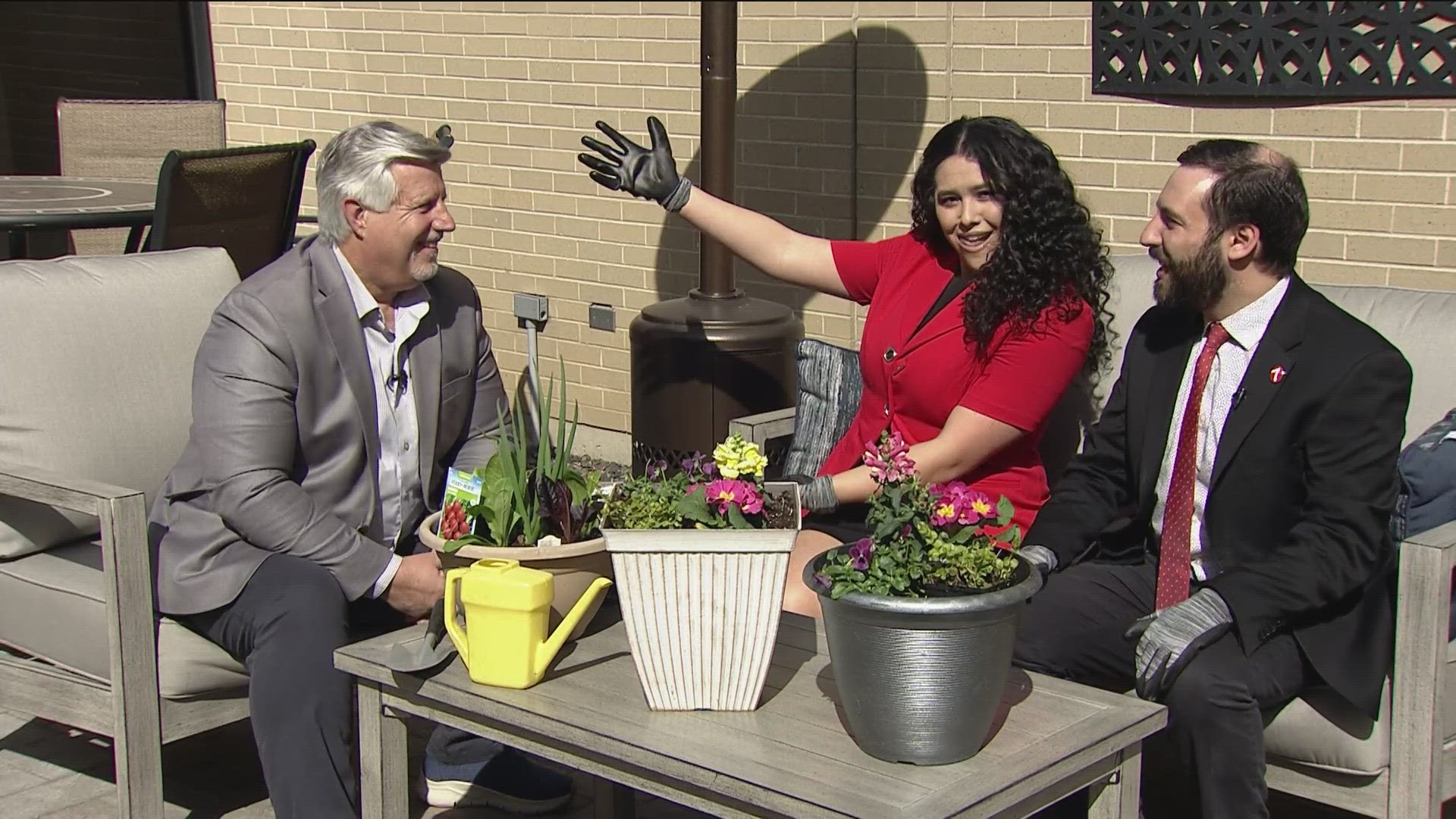BOISE, Idaho — Whether you consider yourself a gardener or not, there’s one thing that almost all of us grow, and that’s grass. A lush green lawn adds beauty and value to our property, and if you want an instant green lawn, sod grass is the way to go.
Garden master Jim Duthie takes us on a return trip to tour a local sod farm that works hard to keep up with the growing demand for the green, green grass of home.
Idaho farms grow everything from potatoes to sugar beets to corn. But on this farm, the cash crop is something a little more uncommon – it’s lush, green grass.
“We’re a true farm. We’re raising grass, sod. But we’re still a true farm, because we do everything that a farm would do,” said Bob McKellip, owner McKellip Sod Farm.
Bob McKellip has been farming this land for 40 years, and for the last 20 years he’s been growing sod, supplying instant lawns for a bustling Idaho housing market.
“It’s no secret that the Treasure Valley is growing. Lots of new houses popping up, and every one of those houses wants a little bit of lawn. Let me show you where the sod comes from,” he said.
McKellip Sod Farm is one of a small handful of turf grass farms in the Treasure Valley. The process takes about a year from planting to harvesting, and it all starts with the seed.
Most of the sod grown for Idaho lawns consists of a blend of different types of grass seed, including Kentucky blue grass and rye grass, making it hardy enough to thrive in our variable climate.
The first step is to prepare the ground for planting. It’s disked to loosen and break up the soil. Then it has to be leveled and smoothed.
“And then, after that, we go in and land plane it, get it flat. We have to have it real smooth,” McKellip said.
After an application of fertilizer, planting begins. A tractor pulls a planting machine like this one. The seed is dumped into the hopper, and then the seed is pressed into the soil.
Once the grass is planted, a biodegradable netting is placed over the entire field.
“And here’s the netting.”
“The grass grows up through the netting, it makes the roots real stable, so as we harvest it, the rolls will stay together.”
The newly-planted fields are watered about once a week, and within about 20 days the grass starts coming up. This field was planted last December, and the grass seeds began to sprout about a month ago. It takes about four months to start looking like a lawn.
"But it usually takes us about 12 to 14 months before it gets ready so we can actually cut it as sod.”
After a few weeks of watering and mowing the sod, an application of weed killer takes care of any weeds that popped up in the grass.
“And then we just mow it and fertilize it.”
“Basically, we fertilize it just like you would if it was in your yard. We’re fertilizing it four times a year.”
This field of sod is ready for harvesting today. It was planted about a year ago.
A new state-of-the-art computerized cutting machine can harvest as much grass in just a few hours, as it used to take 10 men a whole day to do.
“The blade goes underneath it, it cuts it, it measures it. Our rolls are two-feet wide by five-feet long. And so it automatically measures and then it cuts it to the exact length.”
Rolls of sod are automatically stacked on a pallet, which holds 700 square feet of sod, or about 70 rolls. When that pallet is full, it’s automatically ejected, and a new empty pallet takes its place.
“We’re cutting it about an inch deep, but we’re actually only removing about a quarter-inch of soil.”
In no time at all, pallets of freshly cut grass are loaded up and on the way to their destination as somebody’s brand new lawn.
“The advantage to sod is that you go from a bare lot to perfectly grown grass,” said Nick Groff, sales and marketing, "and at the end of the day, you’ve got a perfectly green lawn.”
The average cost for 2,000 square feet of sod delivered will run about $750. Planting that same amount of grass from seed is cheaper initially, but overall it will cost about the same, when you consider the amount of time and maintenance involved for the lawn to become fully established.
By the way, here’s a great way to get answers to your gardening questions and share tips and pictures with other gardeners: join the You Can Grow It Facebook group. Just text the word ‘grow’ to 208-321-5614 and we’ll send you a link to join the gardening conversation with thousands of other idaho gardeners.
Watch more You Can Grow It:
See them all in our YouTube playlist here:



